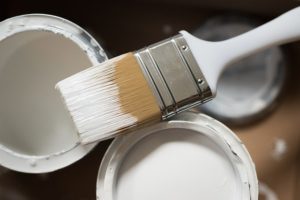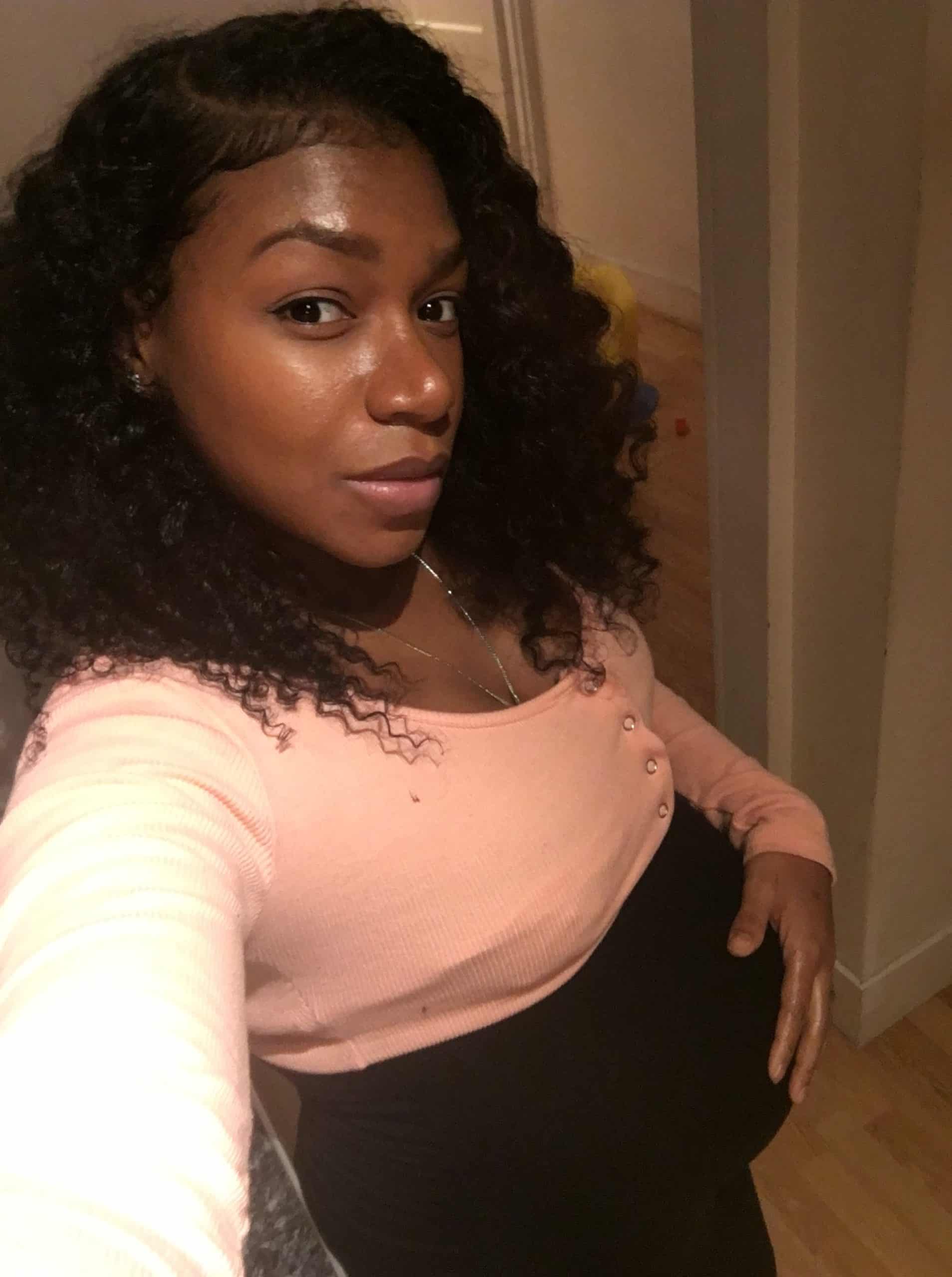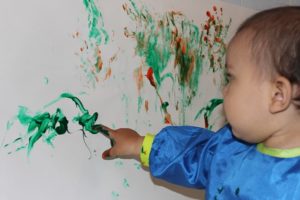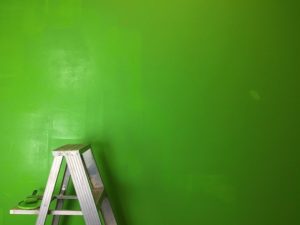Figuring out how long after painting a room is it safe for toddler to enter is a problem that many families face.
Paint and the fumes from the paint can have serious health issues and caution needs to be taken when paint fumes and infants.
Many paints contain a variety of chemical compounds that can be harmful to children if that is exposed over a certain time.
Young children, unborn babies and pregnant women are at the highest risk.
Therefore finding out how long after painting a room is it safe for toddler to enter is an extremely important consideration.
In this short article, we will expose the myths and find out once and for all the dangers of a child sleeping in freshly painted room.
Editorial Pick: How To Discipline A Toddler
How Long After Painting A Room Is It Safe For Toddler

This timeframe varies with how well ventilated the room is and the size.
If your looking for information on how long after painting a room is it safe for baby, then this time frame applies aswell.
The smaller the area and the better ventilation the sooner you should be able to return back in the painted room.
Larger rooms with little to no ventilation will need longer.
To avoid any unnecessary health concerns try to wait at least 3 days before you return to the freshly painted room.
This will leave no room for error and give even an under-ventilated room the chance to successful air out.
Paint Fumes and Infants
The smell of paint for short periods are usually harmless to infants.
However, if they are exposed for long periods the health risks are a lot higher.
Initially, the smell of fresh paint and paint fumes can be irritating and unpleasant.
Traditional paints contain a mix of toxic chemicals that do emit harmful fumes.
An infant will have a be more sensitive so this could affect them more than older children.
The most common symptoms for paint fumes and infants left for excessive periods without ventilation are:
- Throat or lung irritation
- Dizziness
- Headaches
- Vision problems.
However, it is important to note that newer paints don’t emit such harmful fumes.
For example, water-based paints or latex paints can be much safer for babies and toddlers as postponed to oil-based paints.
Also, it’s important to remember that the toxicity levels do differ depending on different paint brands so it’s important you research each paint brand as well.
If your infant is particularly vulnerable then it’s advisable to avoid oil-based paints completely.
Instead search for more non-toxic, organic products that have less harmful substances in them.
Wall Paint Safe For Babies
There are a few variety’s of products that you can buy with lower VOC levels in them (volatile organic compounds), Some are VOC free and you can usually ask your local hardware store about infant safe paints.
– VOC free paint
This paint type is odourless and it does not release into the air any harmful chemicals.
This is the industry standard for infants, babies and toddler and the one we recommended when painting any room that infants will be in or need immediate access to.
– Low VOC paint
This does exactly what it says on the tin (No pun intended) It contains low levels of VOC, but is not odour-free.
Usually, people wait at least 24 hours before bringing infants back into the painted room.
Oil-Based / Latex Paints
These are the ones that take the longest to dry, sometimes up to 2 weeks.
You will need to ensure the room is correctly ventilated and use fans or open windows as much as possible.
The issue here is that the paint fumes linger in the air as evaporating gasses.
Low or VOC free paints don’t have this problem so it’s advisable to go for those options if you have younger children.
Child Sleeping In Freshly Painted Room
Learning how long after painting a room is it safe for baby to sleep in is important.
A child sleeping in a freshly painted room can seem very harmful.
But as long as the room is well ventilated and you use fans or windows to release more fumes faster your child can sleep in the room after 24 hours.
Remember VOC free or Low VOC paints can increase that time.
This is important if you are unable to be away from home for longer periods.
What to do if you can’t find/afford VOC free paint?
Low VOC or VOC free paint is significantly more expensive than other brands.
If you are unable to purchase them then you can follow these guidelines instead:
- Stay at a relative or a friends house with your children until all the painting is completed in your house. This can sometimes take a few days and then you will need to give it a few more days for the paint fumes to completely clear.
If you are unable to stay away from home then try these recommendations instead:
- Don’t paint all the rooms at the same time. Instead alternate between rooms so you always have 1 ‘safe’ room for your infant to sleep in. Also try to keep your toddler away from freshly painted rooms as ingesting paint is very harmful.
- Keep all paint material locked away in a spare room.
- Try to paint at night when your children are sleeping or resting. This will decrease the number of toxins they take in and decrease the risk of paint exposure.
- Keep your house well ventilated and keep fans running and windows open as much as possible.
Learning how long after painting a room is it safe for toddler or baby isn’t difficult, but try to remember to reduce your child’s exposure to paint and paint fumes to a minimum.
A child sleeping in freshly painted room is an issue so make sure you properly ventilate the room first.
Conclusion
You now have the most straightforward answer for how long after painting a room is safe for toddler.
Remember, never expose your little one to paint fumes because they risk lead poisoning and other toxic chemicals.
Also, purchase paint with low VOC levels or better, VOC-free paint and after painting, ensure the room is well ventilated to allow the paint to dry.
Frequently Asked Questions
How Long Are Paint Fumes Harmful?
The effects of paint fumes can be both long term or short term, depending on the length of time one has been exposed.
The effects might also depend on the type of paint fumes one is exposed to.
For example, lead-based paints are used in some countries whereas other countries regulate the usage of these paints.
In such countries with regulations, like the US and the UK, it’s still possible to find lead-based paints on houses built prior to these regulations.
Lead-based paints are among the most dangerous ones to get exposed to.
Exposure to these paint fumes can lead to long-term damage to the nervous system and kidneys.
For children, especially, it can lead to delayed development and stunted growth.
- Exposure to paint fumes might cause short term effects like;
- Throat, eyes, and nose irritation
- Nausea
- Headache
- Strained breathing
- Feeling light-headed or dizzy
- Allergic reactions, especially for anyone suffering from breathing problems like asthma.
In a 2010 study, it was reported that high levels of some specific volatile organic compounds in paints, glycol ethers, and propylene can lead to long term effects like asthma, rhinitis, and eczema.
How Long After Painting A Room Is It Safe To Sleep In?
But what will do you do if you cannot afford VOC-free paints and have no place to stay after painting a room?
First, before embarking on your new home decor project and repaint every room with your favorite color, it’s best to first determine how long after painting a room is it safe to sleep in it.
In fact, if the room painted is for a baby or toddler or a younger individual, it’s important to first get the answers to this before you start painting.
Remember that children are still developing, especially newborns and toddlers, and their body’s immune systems are not strong enough to fight.
A small exposure to VOC might have worse ling term effects on a baby than it would on an adult like you.
The good news is that there is a variety of paints in the market that do not contain VOCs that one can use.
However, it doesn’t hurt to be extra careful, whether the paint contains VOCs or not, especially when dealing with babies.
On any particular time you want to paint a room, ensure you have an extra one that the baby or you can use to sleep in while the paint dries off and the fumes disappear.
Every extra caution you take ensures the safety of your child.
Since a child can sleep in a painted room after 48 to 72 hours, it doesn’t hurt to wait.
If possible, take an extra day just to be sure, and test the room for any paint fumes or residuals that the child might consume before allowing them to sleep in the room again.
Here’s a quick video Is It Safe for Kids to Sleep in a Freshly Painted Room?

Iesha is a loving mother of 2 beautiful children. She’s an active parent who enjoys indoor and outdoor adventures with her family. Her mission is to share practical and realistic parenting advice to help the parenting community becoming stronger.





